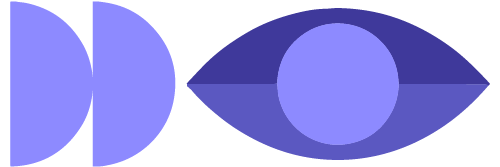In the ever-evolving world of web development, creating and maintaining a consistent user interface (UI) can be a challenging task. Enter the component library, a powerful tool that streamlines development and ensures a cohesive and delightful user experience across web applications. Building a component library is an investment that pays off in increased efficiency, improved collaboration, and enhanced user satisfaction.
What is a Component Library?
A component library, also known as a UI toolkit or design system, is a collection of reusable UI elements, patterns, and styles. It serves as a single source of truth for designers and developers, encapsulating the building blocks of the web application. Components can range from simple buttons and input fields to complex navigation menus and data visualization elements.
Benefits of a Component Library:
- Consistency: A component library fosters a consistent look and feel across the entire web application. By using predefined and standardized components, developers can ensure that the UI remains uniform, enhancing user familiarity and reducing cognitive load.
- Efficiency: With a component library, developers can accelerate development speed by reusing existing components instead of reinventing the wheel with each project. This saves valuable time and effort, allowing teams to focus on solving unique challenges rather than recreating basic UI elements.
- Scalability: As web applications grow and evolve, maintaining consistency becomes more complex. A component library ensures scalability, making it easier to add new features and expand the application without sacrificing the user experience.
- Collaboration: A well-documented component library promotes seamless collaboration between designers and developers. Designers can create wireframes and mock-ups using the standardized components, while developers can easily implement the designs without ambiguity.
- Testing and Maintenance: Since components are reusable and tested thoroughly, any changes or improvements made to a component are reflected consistently across the entire application. This ease of maintenance helps minimize bugs and ensures a smoother user experience.
Building the Component Library:
- Research and Planning: Start by analyzing existing UI patterns, best practices, and industry standards. Collaborate with designers and developers to identify commonly used elements that can be transformed into reusable components.
- Design and Documentation: Create a design system that defines the visual and functional aspects of each component. Include detailed documentation, usage guidelines, and code examples to make implementation seamless for developers.
- Code Implementation: Develop the components using HTML, CSS, and JavaScript. Make sure the code is modular and flexible, allowing for customization when necessary.
- Testing and Optimization: Thoroughly test each component to ensure its functionality, responsiveness, and cross-browser compatibility. Optimize performance to guarantee smooth and fast loading times.
- Version Control and Updates: Use version control to manage changes and updates to the component library. Regularly review and refine the library to accommodate new design trends and user requirements.
Conclusion:
A well-crafted component library is a valuable asset in the web development arsenal. It empowers developers to build applications efficiently and consistently, while ensuring a delightful and user-friendly experience for the end-users. By investing in a robust component library, development teams can elevate their projects to new heights of usability and efficiency, setting the stage for success in the dynamic world of web development.
